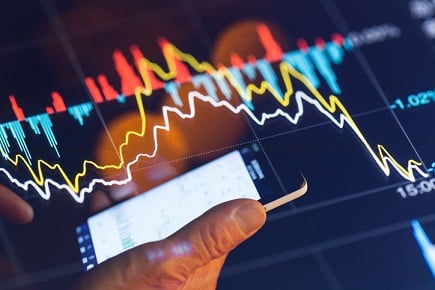A timely and important question arises from a quirk in how the number is calculated

When it comes to investments, no number tells the whole story. A decent picture of historical returns may require looking at one-, three-, five-, and ten-year time frames. Risk is typically defined in terms of return volatility, but other measures may work better in the context of retirement planning.
So it shouldn’t be surprising that the cyclically adjusted price-to-earnings (CAPE) ratio, popularized by Nobel Prize-winning economist Robert Shiller, comes with a caveat.
“[The CAPE ratio] is the real, or inflation-adjusted, S&P 500 index divided by the 10-year average of real S&P 500 earnings,” reported The Wall Street Journal. “The aim is to correct for swings in profits that can falsely suggest stocks are cheap or expensive.”
On his website, Shiller maintains an up-to-date model of the CAPE ratio, which currently stands at 28.9 compared to a 50-year average of about 20. Followers of the ratio will know that’s a very high number, and is worrisome as elevated CAPE levels have tended to be linked to subpar medium-term market returns.
But the current estimate of the CAPE ratio takes into account steep losses incurred by S&P 500 companies in the last quarter of 2008 — even though the period was more than 10 years ago.
“[I]n the way Mr. Shiller has put together the spreadsheet he maintains on his website, the CAPE isn’t actually an average of the past 10 years earnings but a 10-year average of the previous year’s earnings,” the Journal explained.
That altered calculation wasn’t a mistake on Shiller’s part: he adopted that approach to stay consistent with historical data extending beyond the 83 years’ worth of earnings figures available from S&P Dow Jones Indices. Discounting the effect of the late-2008 losses would pare the CAPE ratio down to 27.2 — still high, but 6% lower than the current estimate.
One can argue Shiller’s CAPE calculation has always reflected 11 rather than 10 years’ worth of data, which means his CAPE estimates have always tended to skew slightly higher. But that’s particularly salient now as the extreme lows from the financial crisis has created a considerable gap between Shiller’s estimate and the true 10-year CAPE — far wider than it has been in at least the past 73 years, according to the Journal.
This is not the first time assertions of stock overvaluation have been called into question. In 2017, Morgan Stanley’s Global Investment Committee said that US stocks were “fairly priced at worst and downright cheap [considering] low interest rates.” To support its conclusion, it referred to a particular valuation metric that divides the consensus bottom-up 12-month forward earnings estimate by the Moody’s Baa yield, which it said takes both earnings and interest rates into account.
“Investors shouldn’t take these distortions as indicating that Mr. Shiller’s figures are somehow wrong, however,” the Journal said. “There is an important place for the CAPE in investors’ quivers—it just shouldn’t be their only arrow.”



